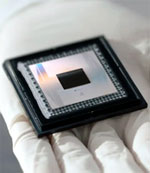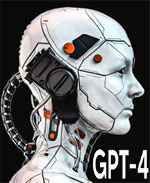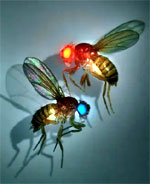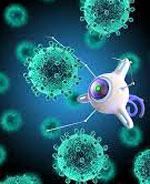

Life-Changing Technologies
Technological Breakthroughs
These ground-breaking technological wonders redefine life as we live it. May 14, 2024
May 14, 2024
CRISPR-Cas9
Glossary
- DNA - DNA, or deoxyribonucleic acid, is a molecule that contains the genetic instructions for the development, functioning, growth, and reproduction of all known living organisms and many viruses. Structurally, DNA is a double helix composed of two long strands that coil around each other, forming a ladder-like structure. Each strand is made up of nucleotides, which consist of a sugar molecule (deoxyribose), a phosphate group, and one of four nitrogenous bases: adenine (A), thymine (T), cytosine (C), and guanine (G).
The sequence of these bases (ATCG) along the DNA strand encodes genetic information. The genetic code specify particular amino acids. Amino acids are the building blocks of proteins, and proteins perform most of the essential functions within a cell. - CRISPR - CRISPR stands for Clustered Regularly Interspaced Short Palindromic Repeats. It is a natural defense mechanism found in bacteria that helps protect against viral infections. It consists of repeating sequences of genetic code (ATCG) interspersed with unique sequences derived from past viral infections.
- CRISPR-Cas9 - CRISPR-Cas9 is a specific molecular tool that harnesses the CRISPR system for targeted genome editing. Cas9 is a protein that acts like a pair of molecular scissors, capable of cutting DNA at specific locations dictated by a guide RNA molecule.
- CRISPR vs CRISPR-Cas9 - the basic difference between CRISPR and CRISPR-Cas9 is that CRISPR refers to the natural bacterial defense system, while CRISPR-Cas9 is a genome editing technology that uses components of the CRISPR system, particularly the Cas9 protein, to make precise changes to the DNA.
- gRNA - guideRNA, as its name goes, guides the CAS9 protein (a gene-editing molecule) to the precise target sequencing in the DNA that will be edited.
The Gist
With CRISPR-Cas9, genetic diseases like Sickle Cell Disease, Cystic Fibrosis, and Huntington's Disease can be cured, not by medication or surgery, but by precisely editing disease-causing mutations at the DNA level. This permanently improves your DNA and your offsprings will exhibit this new DNA.
But beyond genetic diseases, CRISPR-Cas9 holds promise of delaying the aging process, curing cancer, repairing tissues and regenerating cells through stem cell therapy. A much broader health and therapeutic horizon looms with the many applications of CRISPR-Cas9.
DNA Cut-and-Paste
A ground-breaking technological breakthrough now allows for a simplified "cut and paste" of a precisely targeted DNA sequence to repair damaged DNA (curing disease) or enhance DNA (Eugenics). The ramifications are profound and can change the genetic landscape. This technology is CRISPR-Cas9. What makes it different from other gene-editing technologies is its precision, simplicity, efficiency, and versatility. CRISPR-Cas9 has significantly simplified the process of genome editing and has been widely adopted across various research fields.

Advantages over other Gene-editing Technologies
- Ease of design - designing gRNA (guide RNA) is straightforward compared to the complex protein engineering of other approaches (ZFNs, TALENs, etc.)
- Versatility - CRISPR-Cas9 can simultaneously target specific DNA sequencing by creating multiple gRNA. This is not as easily done with ZFNs and TALENs
- Efficiency - CRISPR-Cas9 has higher editing efficiency and is more precise compared to ZFNs and TALENs
- Lower Cost - CRISPR-Cas9 is more affordable and accessible compared to ZFNs and TALENs, making the technology more widely used in research laboratories
Limitations and Downsides
- Off-Target Effects - CRISPR-Cas9 can target similar but not identical DNA sequencing which can cause harmful and unpredictable results
- Delivery Challenges - despite the straight-forward development and use of gRNA, delivery to target sequencing of CRISPR-Cas9 is still challenging and imperfect
- Immune Response - in therapeutic applications, the introduction of a foreign component, CRISPR-Cas9, may trigger an immune response rejection leading to adverse reactions
- Large DNA Insertions - CRISPR-Cas9 is efficient with small DNA insertions/deletions, but not with large insertions. Precise insertions of large DNA fragments remain technically challenging and less efficient
- Off-Target DNA edits - CRISPR-Cas9 may induce unintended changes in gene expression at the RNA level, potentially affecting cellular functions
- Ethical ramifications - CRISPR-Cas9 can level up the baseline of the human genetic pool. Although it has many clear advantages, many oppose Eugenics.
- Weaponization - CRISPR-Cas9 can produce a new breed of humans specific to a purpose like the ultimate soldier, aka Replicants
Eugenics vs Gene Therapy
CRISPR-Cas9 is a double-edged sword. On one hand, it can correct faulty genes offering potential benefits for increased health and intellectual advancement. But on the other hand, it can create a new category of enhanced human beings while those with normal genes can be stigmatized as being 'faulty'. This could lead to coersion by the state to enforce mandatory gene-correction, disenfranchisement of the vulnerable and impose limitation on the genetic pool.
Ending Thoughts
There have always been efforts to produce a better version of the human species - disease-resistant, stronger, faster, more intelligent, perfect physique, etc. Popular movies like Gattaca and Brave New World underscore such theme. Nearly every parent avails of means to realize a competitive edge for his/her offspring - tutoring, gym workouts, nootropics, post-school extracurricular activities, etc. Biohackers use unproven technology to push their limits. But now that technology is in place to make this happen at the DNA level, there is concern and pushback.
If you can correct your DNA errors to become the best version of your genetic potential, would you do it? I would.
--- Gigit (TheLoneRider)
YOGA by Gigit ![]() |
Learn English
|
Learn English ![]() |
Travel like a Nomad
|
Travel like a Nomad ![]() |
Donation Bank
|
Donation Bank ![]()
Leave a comment?
Next story:

![]()

![]()
![]()
Taking a Free Online A.I. Course
(May 18, 2024) I was having lunch with Kat when she deliberated on the many ways AI is more relevant and compelling - including having AI be the 'teacher' for home-schooled kids. I was blown away. I thought I was already proficient with AI, but now I realized I had to level-up my game. Where to start? From the bottom - what is AI?...more »»
»» back to Technology
»» back to Homepage
ARCHIVE 2025:
JAN |
FEB |
MAR
1970 |
1973 |
1975 |
1976 |
1977 |
1979 |
1981 |
1996 |
2000 |
2001 |
2002 |
2003 |
2004 |
2005 |
2006 |
2007 |
2008 |
2009 |
2010 |
2011 |
2012 |
2013 |
2014 |
2015 |
2016 |
2017 |
2018 |
2019 |
2020 |
2021 |
2022 |
2023 |
2024 |
2025 |
ALL BLOGS








